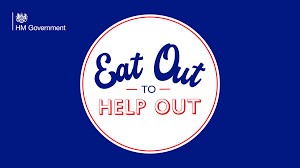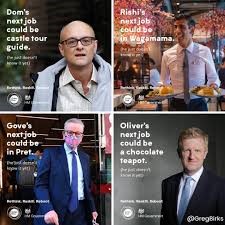By Isobel Parker
In a lockdown 2.0 Britain, August almost seems hundreds of years ago; almost the golden age of this century like year, life was good but in retrospect was it just the calm before the storm?
Perhaps the most memorable aspect of August was Sunak’s Eat Out to Help Out scheme announced on 8th July: a £500 million subsidy for the UK’s hospitality industry, providing 50% off meals throughout August every Monday, Tuesday, and Wednesday. The scheme was expected to bolster the £130 billion hospitality industry by drawing back nervous Britons to the hustle and bustle of normality.[1] Although at the time, the scheme seemed like the lifeline we all needed, now it is being blamed for the recent spike we have seen in Covid-19 cases which is not surprising as two weeks after the scheme ended virus cases had more than tripled from the figure taken on 1st August.

The scheme was an example of two-way asymmetric communication: an imbalanced communication that persuaded people to change their behaviour. Through offering 50% off meals the government were able to persuade customers to change their behaviour and start going back to restaurants after lockdown. Although customers benefited from the scheme as they were saving money, the main benefactors here were, meant to be, the government and economy as people were once again putting money back into the hospitality sector.
From a PR point of view, it seemed like it would be a clear success. In terms of reputation bank this felt like an almost fail safe for the Conservatives, what could possibly go wrong? Through an atypical nudge theory, they were encouraging people to leave their houses, through the promise of discounts and money saving after a bleak economic period. They were saving jobs and businesses by increasing footfall by supposedly tenfold. This was meant to be a saving grace for the industry. But was it enough?
Like a lot of Public Relations campaigns, Eat Out to Help Out employed Dietrich’s PESO model in its marketing. Foremost, as it was a government scheme it had a lot of Paid and Owned media produced by the government, for example there was a lot of information regarding the scheme on the gov.uk website including free promotional materials for every restaurant and café taking part, as well as information about how to use the promotional content within the business. Secondly, the scheme was proposed by Rishi Sunak within the House of Commons which attracted the first swathe of earned media. Earned media was extremely important in the campaign and that’s obvious as it’s what we most remember, for example, the press were invited to events where Conservative MPs were in restaurants serving on providing us with the now recognisable image of Sunak waitressing in

Wagamama’s. The campaign received a lot of press attention and news coverage, whether good or bad, if you now type into google ‘Eat Out to Help Out’ it delivers 4,310,000,000 hits. Furthermore, shared media provided a lot of promotion for the scheme through restaurants marketing the scheme via their own social media. Many venues still have a highlight on their Instagram for the scheme and some eateries, such as Bill’s and Yo! Sushi, chose to extend a ‘spin off’ of the offer throughout September.

Despite all this, figures now show the scheme only had a marginal impact and 66% of businesses still reported a fall in sales between July and September of this year.[2] New findings are also showing that the crowded restaurants of august are to blame for the spike of COVID-19 cases throughout the country, causing people to now feel betrayed and confused about the scheme.[3] Moreover, the hospitality industry has become the Conservatives scape goat with the 10pm curfew being imposed causing many hospitality businesses to lose half their earnings every day. Almost comically the images used to market the campaign of Sunak serving on in Wagamama’s have now be used throughout social media in response to the shambolic CyberFirst campaign. Unfortunately, the scheme obviously didn’t do enough for the Conservatives reputation bank as they have once again become a national laughing stock, leading many people to now view the scheme not as a PR triumph but instead a societal disaster.
[1] https://www.standard.co.uk/reveller/restaurants/eat-out-to-help-out-rishi-sunak-restaurant-vouchers-a4492431.html
[2] https://www.theguardian.com/business/2020/oct/01/eat-out-to-help-out-failed-boost-finances-uk-hospitality-industry
[3] https://theconversation.com/eat-out-to-help-out-crowded-restaurants-may-have-driven-uk-coronavirus-spike-new-findings-145945https://theconversation.com/eat-out-to-help-out-crowded-restaurants-may-have-driven-uk-coronavirus-spike-new-findings-145945
